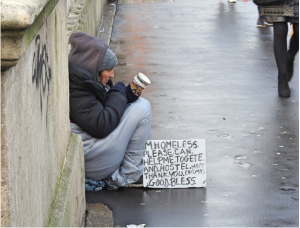Ricky Rowledge, Associate Consultant at Campbell Tickell and former CEO of Council for the Homeless N.I., discusses the evolution of Northern Ireland’s homelessness strategies up to the current strategy and the potential challenges that lie ahead.
Since 2002, Northern Ireland has been in the unique position within the UK of having three sequential homelessness strategies. In addition, the welfare reform programme was implemented later than in other devolved administrations and substantial mitigation measures were put in place until 2020.
Yet, in a population of just 1.8 million, the urgent housing waiting list has stagnated at around 40,000 households and in 2017/18, 19,378 households presented as homeless. This figure has also remained static for more than 12 years.
So why, with such a policy focus and hundreds of millions of pounds’ investment, has Northern Ireland been unable to successfully tackle the human cost of homelessness, and is the 2017-2020 strategy likely to prove more effective?
Audit Commission’s report
The first Homelessness Strategy, driven by an Audit Commission report, demanded that the Northern Ireland Housing Executive (NIHE) tackle what was referred to as a ‘breakdown in competence’ in dealing with homelessness, since the introduction of its legislative duty in the Housing (NI) Order 1988, including a high dependency on bed-and-breakfast accommodation.
Within one year no homeless families were placed in B&Bs. Then the introduction of the Supporting People (SP) programme – through the Housing Support Services (NI) Order in 2002 – allowed substantial capital and revenue investment in excellent temporary accommodation facilities and the provision of specialist support. However, it was reactionary and gave little thought to the structural or individual reasons for homelessness. 
NIHE homelessness strategy
The next strategy did not appear until 2012, by which time the Housing (Amendment) Act (Northern Ireland) 2010 had placed a duty on the NIHE to formulate and publish a homelessness strategy. An extensive range of agencies were obliged to take homelessness into account in the exercise of their own functions.
It was now acknowledged that not one organisation or agency could address the issue in isolation. Yet, despite comprehensive support of its objectives, the 2012 – 2017 strategy suffered from poor implementation and the level of inter-departmental buy in and focus on prevention was weak.
Methods that were successfully reducing homelessness in Scotland and Wales, primarily Housing Options, were not introduced during the lifetime of the strategy.
The current 2017-2022 strategy overtly acknowledges the weaknesses of the previous approach and has a greater commitment to prevention and ensuring the structures for delivery and outcome measurement are in place. These include an Inter-Departmental Action Plan and a dedicated Chronic Homelessness Strategy. Its objectives are fluid and less specific.
Challenges
So, is success in sight? Sadly a number of new challenges face us and realistically it is hard to see how homelessness figures can even remain static.
Lack of a functioning government severely restricts progress. This situation means an inability to increase dedicated funding, introduce an overarching Homelessness Bill, or pool departmental finance in recognition that homeless prevention starts upstream in health, criminal justice and education. Crucially, the opportunity for evidence-based advocacy has gone.
In addition, inadequate housing supply, reliance on the capacity and willingness of the private rented sector to house homeless people and the looming loss of welfare reform mitigation measures is likely to drive homelessness up.
Significant reductions in funding for the SP programme (a 5% reduction in 2019/20 and no inflationary uplift since 2008), the uncertainty of the impact of Brexit and reduced choice due to the religious separation of housing mean little hope of immediate improvement.
Even with acknowledged commitment across all agencies and sectors, it will be an immense task to reduce homelessness in the current environment.
Our best hope is to maintain and increase the effort to help households to maintain their homes, and for agencies outside housing to recognise the part they can and must play. Prevention, they say, is better than cure.
To discuss this article, contact Liz Zacharias : liz.zacharias@campbelltickell.com
This article is also featured in CT Brief, Issue 44 – Ireland Edition
| Campbell Tickell is an established multi-disciplinary management and recruitment consultancy, operating across the UK and Ireland, focusing on the housing, social care, local government, sport, leisure, charity and voluntary sectors.
We are a values-based business and firmly place the positioning of our support and challenge on helping organisations to attain change that is well thought through, planned and sustainable. At CT, we want to help organisations create the landscape within which we ourselves would like to exist: fair, inclusive, diverse, engaged and transparent. We build from our values in how we approach all our work as a practice. Find out more about CT’s Health, Care & Support Services. |



